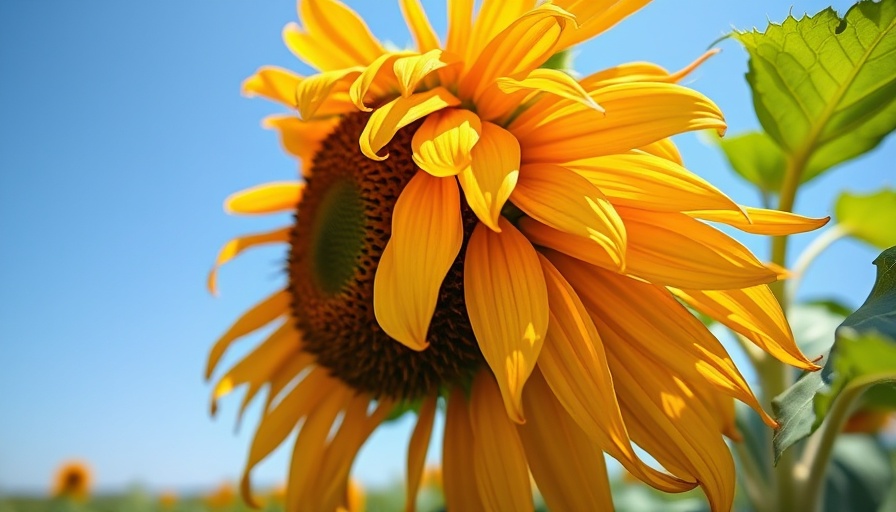
The Beautiful Dance of Sunflowers and Their Secrets
Sunflowers are more than just cheerful faces dotting gardens; they elegantly track the sun's path throughout the day, demonstrating a phenomenon known as heliotropism. It’s enchanting to witness, but what happens when these joyful blooms start drooping? Whether they’re seedlings or fully blossomed, drooping sunflowers can raise concerns for any gardener. However, understanding the reasons behind this behavior can lead to effective solutions and help ensure your garden remains vibrant.
Understanding the Reasons Behind Drooping Sunflowers
While it’s not uncommon for sunflowers (Helianthus annuus) to droop, there are key reasons this may occur. Here are five common explanations:
- Time to Harvest: Believe it or not, drooping can signify maturity! When sunflowers are ready to release their seeds, their heads naturally bow downwards. If your sunflowers have healthy features, this might just indicate it’s almost time for harvest.
- Transplant Shock: If you’ve recently moved your sunflowers from one location to another, they might experience temporary stress. When transitioning, they can show signs of droopiness as they adjust to their new environment.
- Not Enough Water: Hydration is essential, both for our health and for plants. A lack of water can lead to wilting and drooping. Always make sure your sunflowers are receiving adequate moisture—especially during hotter months.
- Stalk Support: As sunflowers grow taller, especially in the case of larger varieties, their stalks may require enhanced support. Without proper staking, they may bend under their own weight, resulting in a droopy appearance.
- Fungal Infections: Sometimes, drooping can be a signal of fungal issues, like Phoma black stem or Phomopsis stem canker. If you notice discoloration or unusual spots on your leaves or stems, quick intervention is necessary.
Reviving Your Sunflowers: Effective Solutions
Depending on the diagnosis, here are actionable strategies to revive drooping sunflowers:
- Adjust Watering Practices: Make sure you’re watering adequately without over-soaking the soil. Sunflowers thrive in well-drained soil, so consider creating moisture-retaining techniques like garden mulching.
- Investment in Staking: For tall varieties, using garden stakes or trellis can help support their growth. Position them when you initially plant the sunflowers to avoid damaging their roots later on.
- Harvesting Techniques: If the drooping is a sign of maturity, don’t despair. Cut the flowers before seed heads form to maintain their beauty and encourage new blooms. This can also be a delight for your indoor spaces, enriching your home’s natural decor.
Preventive Measures for Healthy Growth
Understanding how to care for your sunflowers proactively can prevent drooping in the future:
- Soil Testing: Healthy soil is the foundation of a vibrant garden. Conduct soil tests to check nutrient levels and adjust with organic fertilizers as needed to promote healthy growth.
- Sustainable Practices: Incorporate practices like companion planting and crop rotation. This not only aids in pest control but also creates a healthier growing environment for your sunflowers.
- Use of Organic Pesticides: Keeping pests at bay without harming beneficial insects will create a balanced ecosystem in your garden. Organic methods are recommended for maintaining overall garden health.
Final Thoughts: Embrace the Journey of Gardening
Sunflowers embody joy and resilience, and so should your gardening practices. By addressing issues quickly and implementing proactive strategies, you can nurture vibrant blooms that flourish and bring beauty to your space. Every drooping flower tells a story; understanding it is crucial to your garden’s success. Remember, gardening is a journey filled with lessons and growth, both for you and your plants.
Feel empowered to explore and implement practical gardening tips. Your sunflower adventures await!
 Add Row
Add Row  Add
Add 




Write A Comment